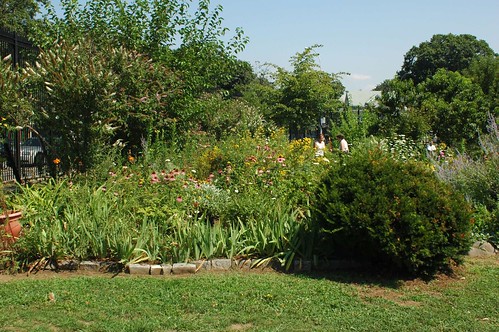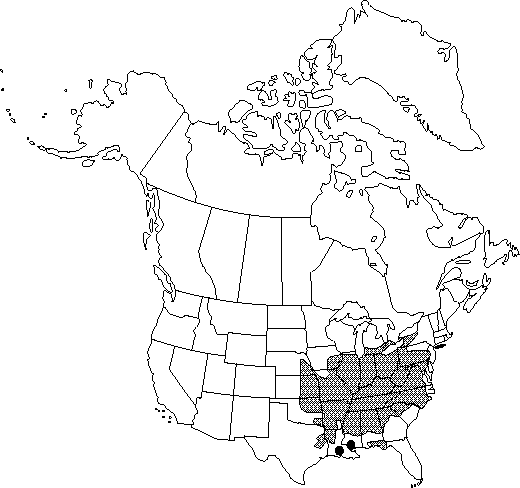Making Brooklyn Bloom in March 2008

I’m hoping to attend the 29th annual Making Brooklyn Bloom at the Brooklyn Botanic Garden this Saturday. The theme of healthy soils, communities and cities is of interest to me.
via press release
The urban gardening community will kick off the spring gardening season at Brooklyn Botanic Garden (BBG) with the 29th annual Making Brooklyn Bloom, a daylong conference on how to green up the borough, presented by GreenBridge, the community environmental horticulture program at Brooklyn Botanic Garden.
This year’s Making Brooklyn Bloom, “Soil in the City: Growing Healthy Neighborhoods from the Ground Up,” focuses on revitalizing our soil, the foundation of life in the garden. The free event features a keynote address by Dr. Nina Bassuk, director of the Urban Horticulture Institute at Cornell University, developer of Cornell Structural Soil, and author of Trees in the Urban Landscape. Exhibits and workshops on rooftop farming, community composting, and soil testing will be offered—all presented by members of BBG’s horticulture staff or experts from other greening organizations in New York City.
“For 29 years, Making Brooklyn Bloom has introduced urban gardeners to sustainable practices and encouraged ecological awareness in city gardens—whether those gardens are on windowsills, in backyards, or in community gardens,” says Robin Simmen, director of GreenBridge. “Focusing on soil this year addresses an issue that pertains to everyone interested in cultivating green space in the city. GreenBridge is proud to bring together leaders in sustainable horticulture and environmental science to share their knowledge on this critical issue—and in doing so, strengthen the community of Brooklyn gardeners,” she adds.
To celebrate its centennial, BBG is commemorating the renewal of Brooklyn’s urban environment by sharing before-and-after photos of local community gardens. Attendees are encouraged to bring photos of their gardens on the day of the event; BBG staff will be on hand to scan and share them on the web throughout our centennial year. Like many of Brooklyn’s gardens, BBG itself started from scratch, transforming its grounds from a derelict coal ash dump into an emerald gem in the heart of the borough.
No preregistration is required for Making Brooklyn Bloom, but it is suggested that visitors register by 10 a.m. on Saturday at BBG’s Palm House to secure their first choice of workshops. Entry to BBG is free before noon or with a flyer about the event. For more details on Making Brooklyn Bloom, please call 718-623-7250 or visit bbg.org/vis2/2010/mbb/.
Making Brooklyn Bloom 2010: Saturday, March 13 | 10 a.m. to 4 p.m.
Workshops:
Soils 101: Theory and Practice
John Jordan, Prospect Park Alliance
Building Soil with Mulch and Cover Crops
Luke Halligan, NYC Compost Project in Brooklyn
Advanced Composting: Beyond the Basics
Jenny Blackwell, NYC Compost Project in Brooklyn | T Fleischer, Battery Park City Parks Conservancy
Soil and Stormwater: Lessons from the Bronx River
Dawn Henning, Bronx River Alliance
Digging Up History: Learning About Your Garden Site
Steven Romalewski, CUNY Center for Urban Research | Mara Gittleman, Council on the Environment of NYC
Rats! (And Other Rodents…)
Caroline Bragdon, NYC Department of Health
All the Dirt on Soil Contaminants
Joshua Cheng, Brooklyn College Soil Testing Lab
Marisa DeDominicis, Earth Matter
Choosing a Soil Test and Interpreting the Results
Matt Brown, Central Park Conservancy | Hannah Shayler, Cornell Waste Management Institute
Soil Fertility: An Organic Approach
Lorraine Brooks, Cornell Cooperative Extension
Native Plants for City Soils
Uli Lorimer, Brooklyn Botanic Garden
Dirt Cheap: Starting Seeds Indoors
Solita Stephens, Olympus Garden Club
Rooftop Farming: Soil in the Skies
Jeff Heehs, Community Advocate | Jennifer Nelkin, Gotham Greens | Annie Novak, Eagle Street Rooftop Farm
Revitalize Your Soil with Compost Tea
Karla Chandler, Brooklyn Botanic Garden
Community Composting Projects in Brooklyn
Claudia Joseph, Garden of Union | Kendall Morrison, Earth Matter | Jessica Katz, 6/15 Green
Matt Sheehan, Brooklyn New School
Networking Brown Bag Lunches:
Bring a bag lunch to take part in these conversations:
• Advocating for School Gardens
• Therapeutic Horticulture
• Street Tree Stewardship
Visitors to Making Brooklyn Bloom will also have an opportunity to take a free Seasonal Highlights tour at 1 p.m.; enjoy lunch at the Zagat-rated Terrace Café; and view the exhibition of BBG artist-in-residence Emilie Clark, a conceptually based body of new work inspired by the 19th-century naturalist Mary Treat.


























